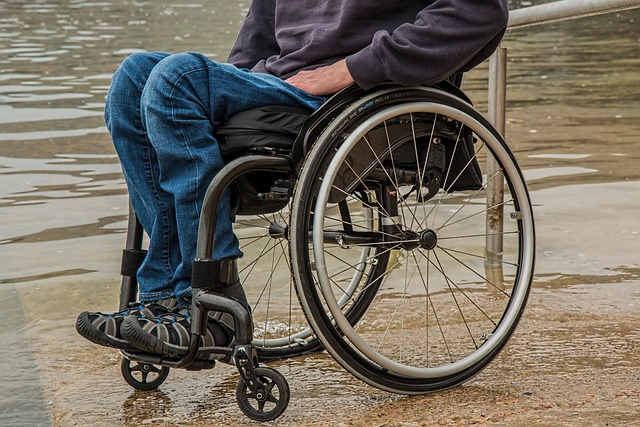Requirements for wheelchair-accessible vans can vary depending on the manufacturer. These requirements include a minimum height, dimensions, and seating options. Other features that can be included in your wheelchair-accessible vehicle may consist of ramps, lifts, and safety restraints.
Seating options
There is a wide range of seating options for wheelchair-accessible vans. Some vehicles have a complete set of seats that provide space for a wheelchair passenger, and others include a removable front and rear bench. While each style is different, they all provide comfort and space for a wheelchair user. In addition to these types of seating, you can choose to have a swivel car seat installed in your vehicle. This helps make it easier for you to get into and out of your car. The best type of wheelchair accessible vans depend on the size of your wheelchair and your lifestyle. If you are transferring cargo or family members, a full-size wheelchair van may be the best choice. A side-entry van is a suitable option for people who want to drive. A side-entry wheelchair vehicle is usually able to accommodate two wheelchair passengers. These vehicles can be purchased with a docking system to enable additional seating. However, the seating capacity can vary depending on your car’s model and the ramp’s installation.
Lifts
There are several essential considerations if you’re considering purchasing a wheelchair-accessible van. You’ll need to consider the accessibility of the vehicle’s ramps and seating. It’s also a good idea to talk to a mobility consultant about future modifications. While not required in every vehicle, the 2010 ADA Standards for Accessible Design clearly outline specific characteristics of wheelchair-accessible vehicles. These standards are intended to increase the safety of adaptable mobility vehicles.
For those unfamiliar with the ADA, there are two main types of accessible vehicles: rear-entry and side-entry. Rear-entry vans are easier for the disabled to enter. However, they require passengers to enter the car in traffic, and they tend to be less flexible than side-entry models. Side-entry accessible vans, on the other hand, allow a wheelchair passenger to enter the vehicle from the curbside. They also offer more flexibility when it comes to cargo rooms. Typically, a side-entry accessible van will include a ramp for wheelchair entry on the side door, making it more convenient for passengers with limited mobility.
Ramps
The van ramps are an essential feature for people who require wheelchair transportation. They can be powered or manual. Some are made of slip-resistant material, making them easier to use. These ramps can be folded up or lowered to fit into the nooks and crannies of a vehicle. Power ramps are the most popular. They compress the suspension and reduce the ramp angle, making it easier for wheelchair users to enter and exit the vehicle. Frequently, these ramps can be operated with the push of a button or by using an essential fob remote control. Folding ramps are a good choice for wheelchair-accessible vans. A fold-out ramp can be stored in the side passenger or rear access door. However, these ramps can hinder when stowed, restricting the front passenger seat recline. Another type of wheelchair-accessible van ramp is the in-floor ramp. This type of ramp slides into the floor underneath the vehicle’s floor. It allows the wheelchair user to enter and exit the car without blocking the door or the wheel well. In-floor ramps also provide extra interior room.
Safety restraints
When a wheelchair is used to transport someone, it is essential to use the correct safety restraints. This ensures that the person is safe and can remain upright during an accident. It also allows for added security when the van is moving. There are many different types of restraint systems. These include retractable, manual, and automatic. Some are more convenient than others. You must consider your needs and wants, as well as your budget. Most modern wheelchair vans come with a system called L-Track. The system is a series of aluminum strips bolted to the vehicle’s floor. Each one has a grooved channel that allows the straps to be locked into place. Another type of wheelchair securement is the Docking System. The dock is installed on the floor of the van. The wheelchair is secured into the Docking System with a locking bolt. A third type is a lap-shoulder belt. The lap-shoulder belt is a crash-tested restraint that holds the passenger in place. For the best stability, the seatbelt should fit snugly over the pelvis and hip of the passenger.
Dimensions
Buying a wheelchair-accessible van can be intimidating for the uninitiated. Thankfully, many companies out there specialize in the industry, making the process easier on the whole family. Choosing the right one is the first step towards a more enjoyable experience. The key is identifying a reputable dealer with an extensive network of contacts. Moreover, a service contract can provide peace of mind and a solid track record. It’s also a good idea to buy a model with some warranty, as you never know when an expensive repair might be necessary. Getting a quality wheelchair van isn’t cheap, but it’s an investment that will pay off in spades. If you’re in the market for a van, consider a few critical factors before you make your final decision. Aside from price, it would be best to consider a van’s fuel efficiency and sturdiness. Plus, you want a vehicle with a decent resale value down the road. Finally, remember to take a test drive. You may be surprised at how well a wheelchair van handles its passengers.









